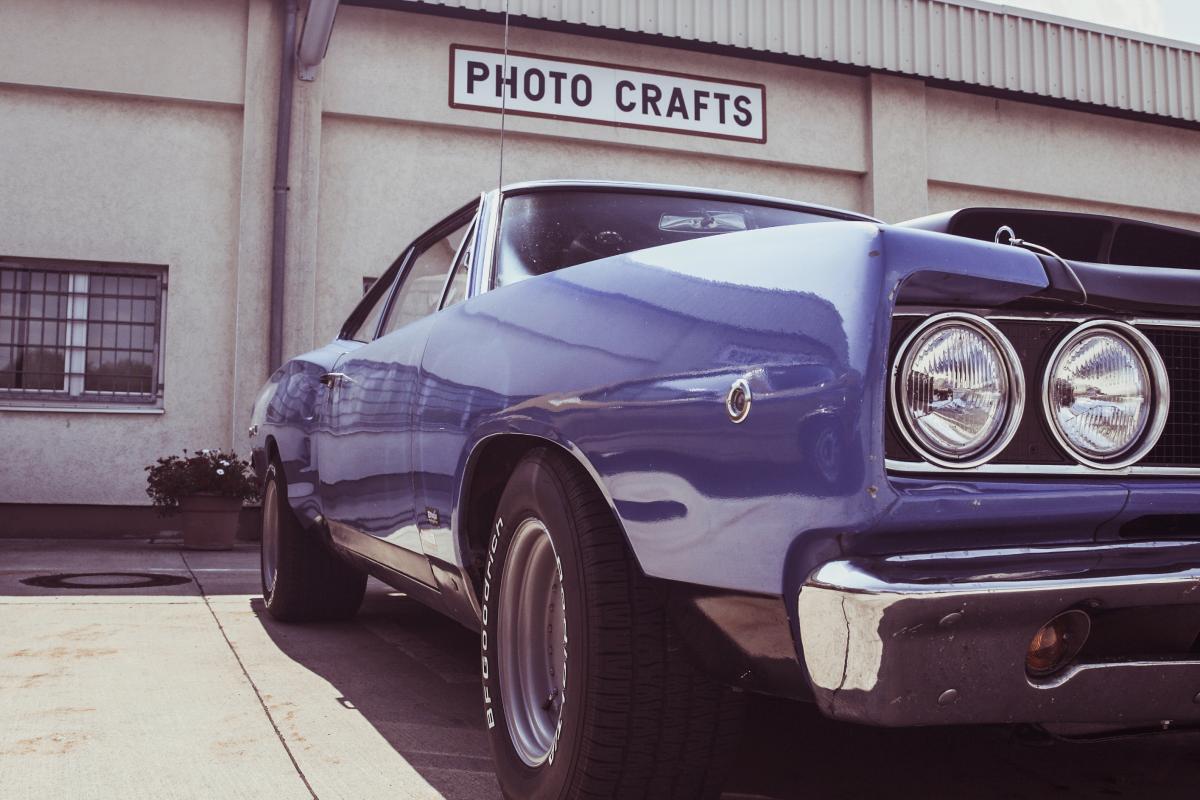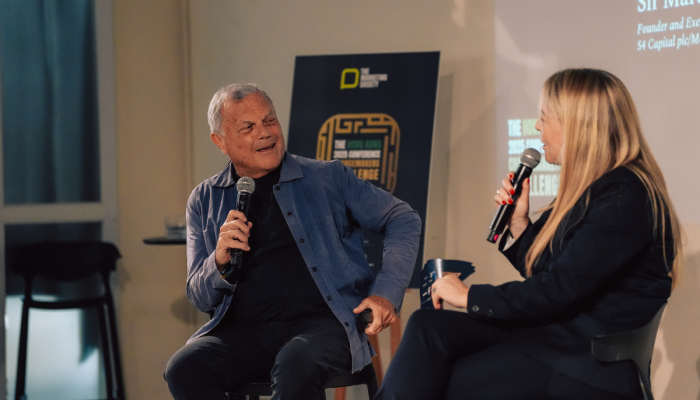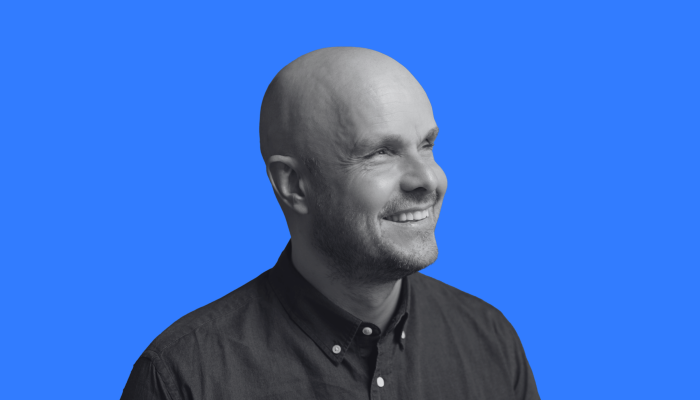I think Abba were wrong. It’s not ‘money, money, money’ that makes the world go round, as conventional economists would have us believe. It’s not even ‘Love Actually’. Love makes us feel much better, but it doesn’t help, as Benny and Bjorn wrote, with ‘all the bills I have to pay’.
What does make the world go round is a commodity in almost infinite supply, that any one of us is capable of producing. It is something that drives all progress and change, including economic growth. It is humanity’s most potent weapon for solving problems, meeting challenges, and realising opportunities.
It is ideas.
There’s only one difficulty. We don’t have enough of them. It’s not just that we can be creative and come up with ideas. We need to be creative. The most important workplace skills going forward – according to the World Economic Forum Future of Work Report, are solving complex problems, critical thinking and creativity. Not leadership, people skills, financial ability and so on. They’re all important. But they’re not fundamental any more.
And the most important skills are certainly not:
Going to meetings.
Budgeting.
And doing the same thing.
Over and again, day after day.
The problems we all face – in Britain and across the world - are increasingly threatening, and we need ideas faster than people can come up with them. Ideas and creativity are far from the top of the agenda. Too few people are producing valuable ideas. There is an ideas deficit, across nations, industries and organisations of all types. Many in the workplace don’t think it is their job to come up with the ideas and innovations that are so desperately needed.
There is an urban myth that ideas and creativity are what only experts can do. But ideas are not someone else’s job.
They are what all of us should try to come up with and develop. Ideas are so important that they already power the economy, even though we don’t recognise it.
It was the Industrial Economy that transformed Britain from living off the land to being a country of factories and offices. Then, 50 years ago, the leading management guru of the time, Peter Drucker, wrote that the Industrial Economy was on its way out. He called its successor the Knowledge Economy.
His vision was of middle class workers carrying knowledge and therefore their passport to a job round in their briefcases – a real change from the paradigm of dependent workers in thrall to powerful corporations. Later commentators renamed this phase as the Information Economy, because knowledge has expanded to include Big Data and the almost inexhaustible information accessible to us all from the Internet.
The rise of social media has brought about a democratisation of communications unthinkable in any other era. Information, ideas and opinions now come from people, as opposed to their being transmitted to them by government, politicians, media, brand owners etc.

Influence is now in the hands of anyone with Internet access.
Influence is now in the hands of anyone with Internet access. Drucker forecast that the transition to the Knowledge Economy should be complete by 2020.
Well, we’re very nearly there – and we’re ready to enter a new era: the Idea Economy. Of course knowledge, data and information are still hugely powerful. But they are about the present and immediate past – whereas ideas are about the future. That’s the whole point of them.
The dawn of the Idea Economy brings with it an operating system that I call Idea Economics: an environment where progress and change happen instantaneously , thanks to an endless supply of ideas and the skilled intervention of a new breed of experts called Idea Economists.
But for this all to work, we will have to start valuing ideas properly, not just applying vague judgements to them. It’s not enough to say, ‘it’s a great idea’, ‘it’s a bad idea’, ‘that’s an idea with legs’, and so on. In the advertising industry probably the most meaningless has been ‘it’s a big idea’. As Jeremy Bullmore says when asked how he recognises a big idea, ‘I don’t know. I see a lot of little ideas, which might grow’.
As Jeremy Bullmore says when asked how he recognises a big idea, ‘I don’t know. I see a lot of little ideas, which might grow’.

I think Idea Economics is a bit like Behavioural Economics in that it values real world behaviours that had been largely ignored by economists.
Before behavioural economics, we were stuck with unrealistic generalisations about human motivation and the drivers that determine how we behave. Now, thank goodness, it’s officially OK for us to behave paradoxically or irrationally. If we now start valuing ideas properly, much of our commercial and even political behaviour will change. Entrenched systems will be routinely challenged, and the pace of change will accelerate.
But how do we actually put a value on an idea?
I think we can borrow from the process of brand valuation, which was invented by John Murphy of Interbrand in 1990. Until then, you weren’t allowed to put brands on the balance sheet, despite the fact that they are just as intrinsically valuable as factories and fixed assets. Without this small revolution, modern marketing would only have half a scorecard, and the value of brand-owning companies would be a fraction of what it is today.
Establishing value on the basis of a complex cocktail of criteria has worked well for brands, and I think it will work equally well as a method of valuing ideas. We can value an idea according to factors like impact, reach, longevity, and geography – and vitally on its capacity to excite everyone it touches.
And to make this practical, valuation has to be possible at every stage of the idea’s lifespan, from commissioning it to measuring the value of its implementation, and beyond.
Of course, seeing ideas as valuable isn’t a radical new thought.
Patents after all are a recognition that ideas may be worth money, and they were first awarded in the Venetian Republic as long ago as the 15th century! Thomas Edison certainly wouldn’t have registered 1,093 US patents and 1,239 patents in 34 countries had he not believed that his ideas were valuable.
Ideas have been powering the advertising business for a long time. I’m lucky enough to have worked with some brilliant idea generators. For over 25 years, my job was to arrange pitches from the world’s most talented advertising agencies for the world’s biggest brands, and to help judge the winners.
In these pitch contests, despite the inevitable procurement people with their grids and spreadsheets, the final decision was usually based on subjective reactions. Inevitably, the people the clients liked best happened to be the ones presenting the ideas they liked. In other words, great ideas generally win over charisma and chemistry, slick delivery, technical or structural security, and even price. Why is this?
Essentially an idea is a connection between things already stored in our neurology – things we have thought, seen, heard, touched, or smelled. Good ideas come from putting things together, and the more unusual or surprising the connection, the more impact it is likely to have.
The effective impact of an idea is not so much on the idea generator; it’s on whomever we are seeking to inspire or persuade. And that process starts the moment we share an idea with a friend, or a partner, or a colleague. Sharing an idea multiplies its chance of success.
In my experience, two people is by far the most effective human team for birthing ideas. It’s so much easier to develop an idea into something really useful with the enhancement and polishing that comes from the second person’s involvement.
I call this the Dynamic Duo. I worked very closely with Jon Leach, the very first Idea Economist, on THE VERY IDEA. Our co-operation was incredibly fruitful. Once the idea is born, teams tend to expand to include people with specialist contributions to make, and maybe people whose approval we need. Which is fine, as long as we always remember that the fewer people we have around the table, the more productive any meeting is likely to be.
What we need above all else is quantity. Ideas are like birds: they tend to flock. The key to success is having plenty to choose from. If we want the most valuable ideas, it’s a numbers game. We need lots of ideas to get to the really valuable ones. We need to be prolific so we have the security of knowing we can choose the best idea from a strong field.
Ideas are like birds: they tend to flock. The key to success is having plenty to choose from.

It’s no coincidence that very famous people in the arts, entertainment, sport etc were all very prolific. We don’t remember many one hit wonders.
Quantity makes it more likely that we’ll have quality – but the next step is prospecting. Selecting ideas is just as important as generating them. Whether it’s Edison registering a patent or Coca-Cola looking for its next campaign theme, what we are looking for is a valuable idea.
So how do we find the one in a hundred, or even one in a thousand, idea that is a diamond hiding amongst the rocks?
I call these diamonds ‘Very Ideas’. It goes back to a phrase I heard a lot in my childhood. I had three elderly maiden aunts, who shared their governess with Agatha Christie. If I said something startling to one of them, like ‘Aunt, I think there’ll be a lady Prime Minister one day’, she’d invariably reply, ‘the very ideah’. It meant ‘don’t be ridiculous’.
So when I wanted a phrase to signify an absolute humdinger of a valuable idea, ‘the very idea’ it became. There are obvious differentiators of Very Ideas, and in my book, Jon Leach, the Idea Economist, provides the maths to prove some things we’d known all along, and to quantify some real surprises.
Being unique (or at least original) is a huge advantage
Original ideas are exponentially more powerful than things we have seen before, much more impactful and much longer-lasting. There is an originality premium in their value. Being shareable also enhances value, particularly when we get a cascade effect from going viral.
There are several other characteristics of Very Ideas, some of which may seem surprising at first sight. Like the fact that tinkering with ideas can often improve them.
And that we need to embrace mistakes.
Mistakes quite often turn out to be useful.
And that risky very often beats safe.
So how do we turn on the flood of ideas we need in order to discover enough Very Ideas for a safe, prosperous and sound future?

We all carry round with us a piece of equipment that has ability to create and seek out Very Ideas.
It’s not your Smartphone: it’s your Idea Brain. It’s your Idea Brain that helps you make connections between new things and what is already stored in your mental filing system. But like any skill or capability, it takes work to develop it to full capacity.
So let me end with some tips for powering up your Idea Brain.
Disengage the autopilot.
Most of us are coasting on autopilot around 80% of the time. Switch it off if you seriously need an idea . You are going to need all the brainpower and flexibility you can muster.
Be systematic.
Write idea briefs, using the same tried and tested ‘objective, strategy, execution’ structure that the advertising experts borrowed from the military. It has worked well for brand communication, and it will be just as effective in generating and developing ideas.
Have a conversation with yourself.
You may want to do this in private! The new idea you’ve come up with may be important, and you need to rehearse it and debate it with yourself before sharing it with your friends or colleagues.
Go to sleep fast. But wake up slowly.
You have access to terrific processing power when you’re asleep. And you can use it to solve problems. So, when you turn in for the night, don’t lie awake worrying about the problems you have failed to solve during the day. By morning you will probably have more answers than questions.
And giving yourself time to plan the day while you doze into wakefulness is far more beneficial than leaping up in a panic. Just think how many very ideas you might be able to come up with if you’re thinking by day and processing by night!
David Wethey's book, The Very Idea, is available to purchase now from Amazon.
This article first appeared in issue 1 of new members-only Marketing Society publication EMPOWER. Members can read the issue here. If you've forgotten your login details please email our Editor.



